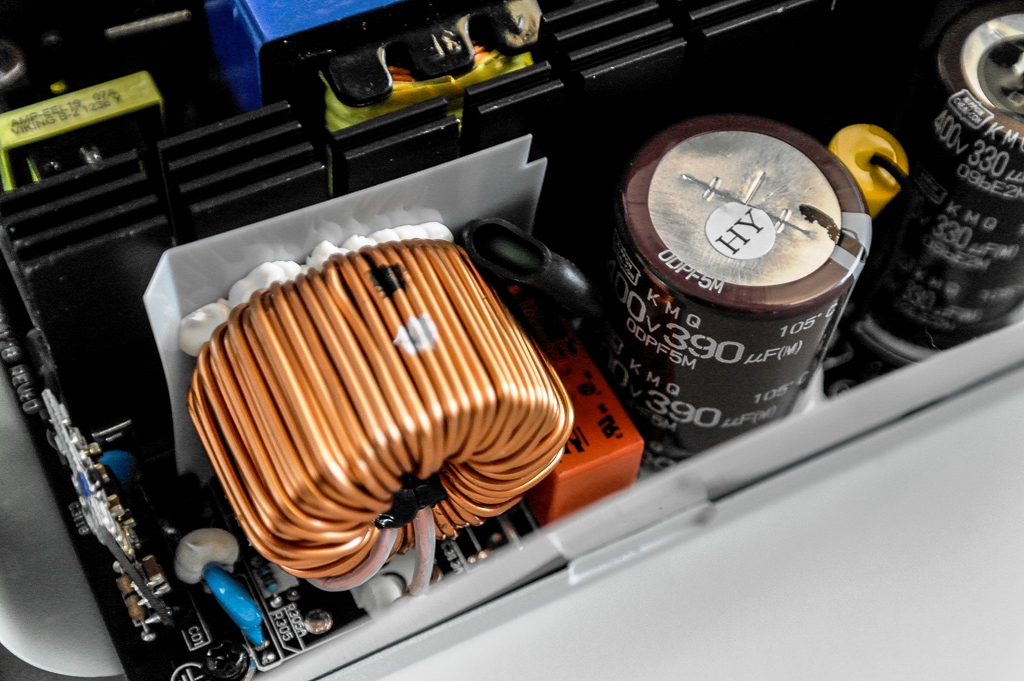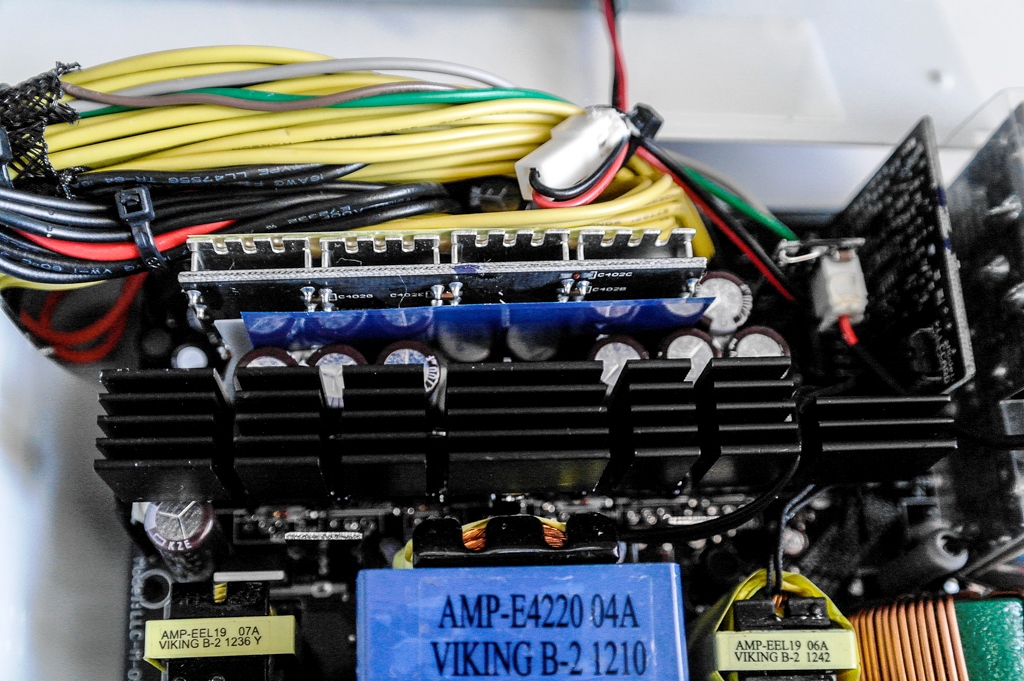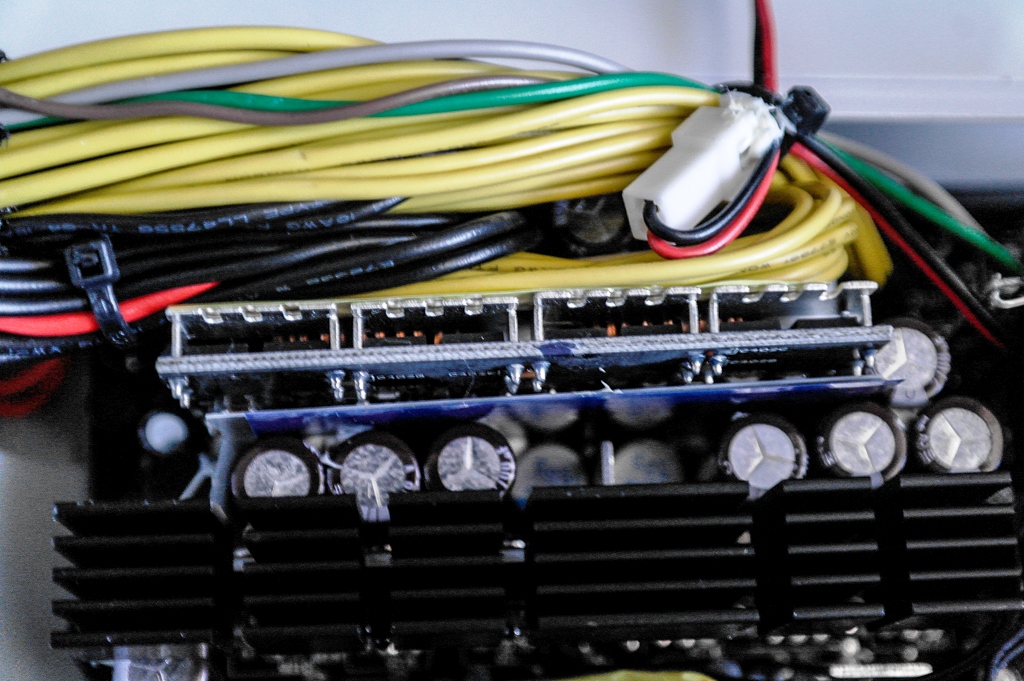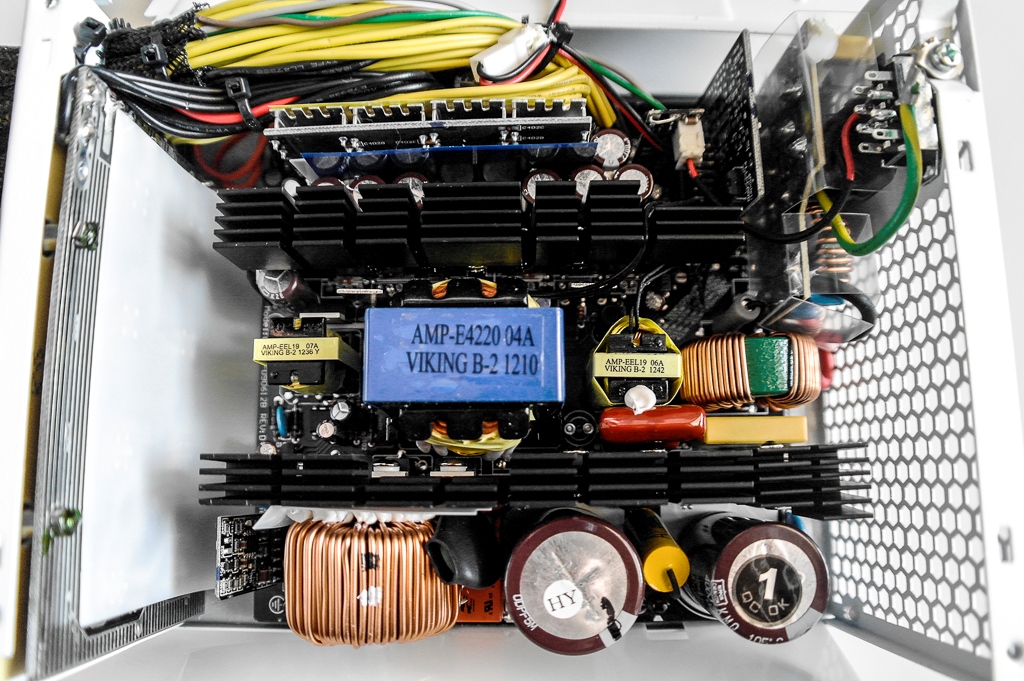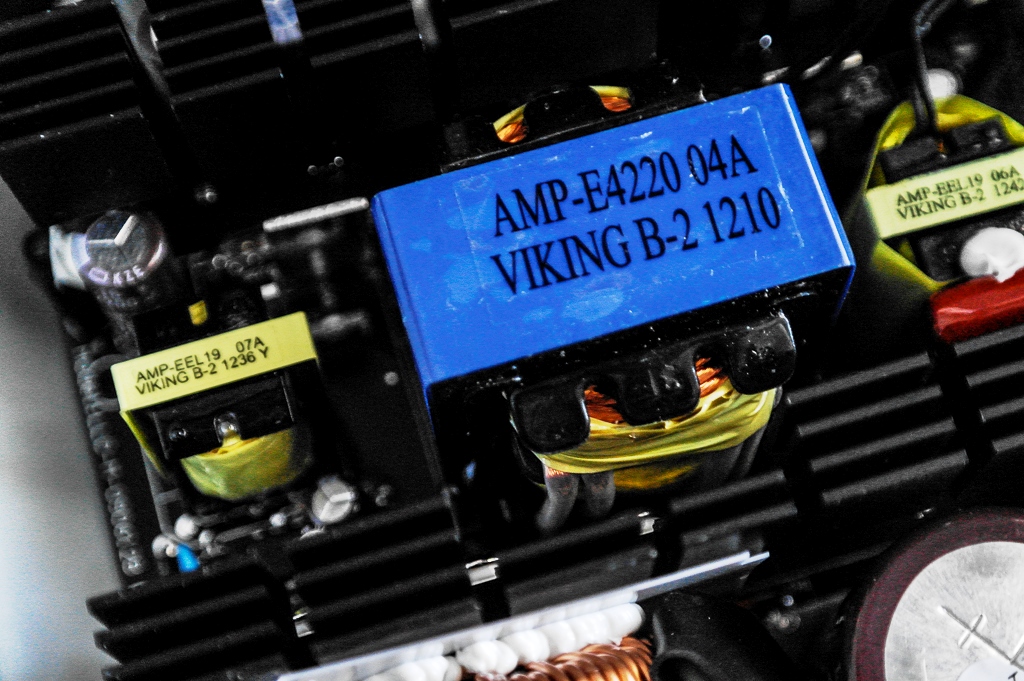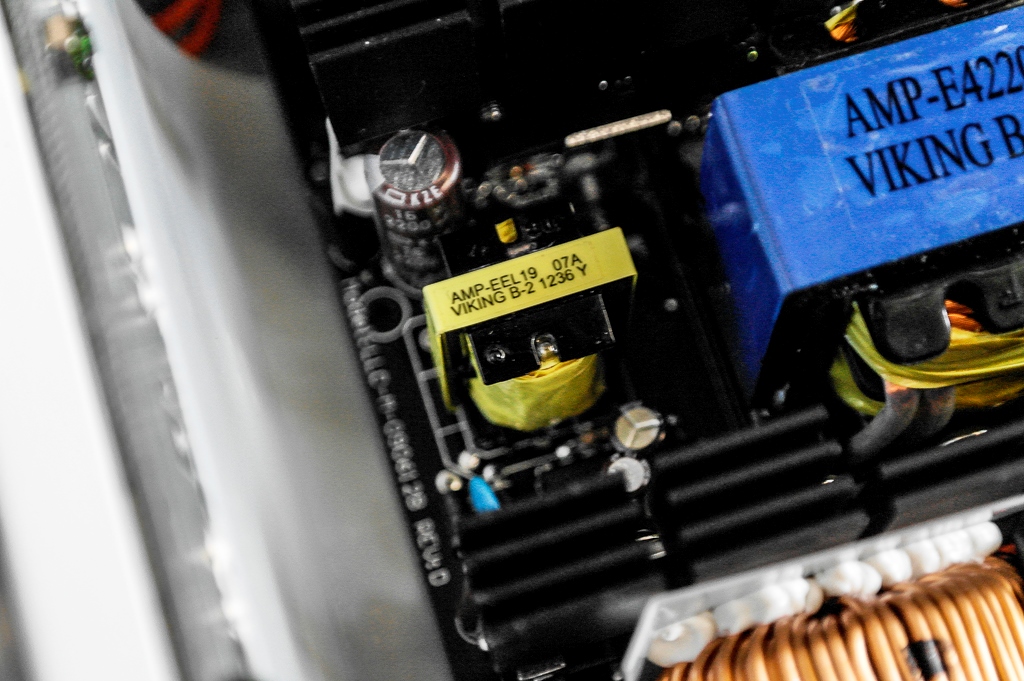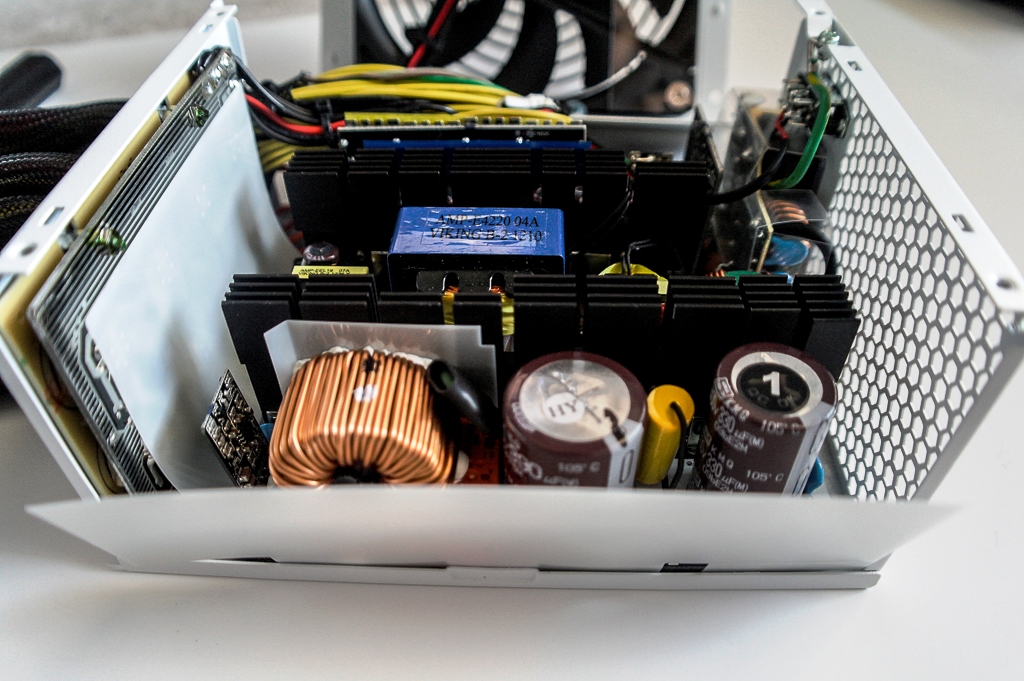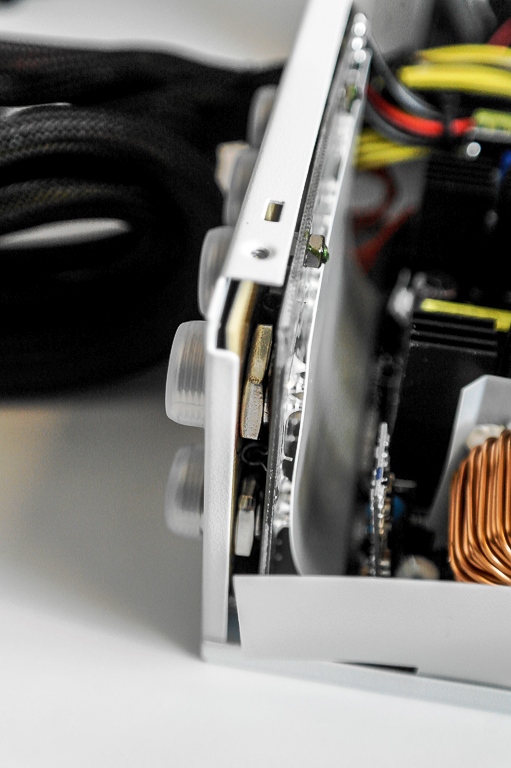CLOSER LOOK
Looking further at the primary stage of the power supply, we notice the output of the active PFC circuit is filtered by two electrolytic capacitors – a 400V x 330uF and a 400V x 390uF, which are japanese constructed and tested for conditions upto 105⁰C.
The active PFC controller and switching transistors can also be found on the opposite side of the primary stage, and the switching transistors can further be found on the opposite side of the primary stage heatsink.
The transistors used throughout the primary stage are MOSFETs indicating a stronger power supply build.
Looking further at the transformer stage of the power supply boarding the primary and secondary stages, it can quickly be noticed that three different transformers are utilized, which is typically found in all power supply builds. The largest is the main transformer producing the +12V needed to power the computers main components.
The two smaller transformers produce the respective +5V (standby power) and +3.3V outputs which are connected to the single main +12V rail for increased efficiency. It should be noted that each voltage line output is generated through its own distinct line, which is then connected to the +12V main line. This is specific to well built power supplies, as generic power supplies usually have the +3.3V output off of the +5V line.
The Secondary stage of the power supply can be seen to possess a plethora of Japanese electrolytic capacitors to further filter the current prior to it passing into the computers components, as well as the required +12V, 5V, and 3.3V rectifiers found on the secondary heatsink. These are typically only used in better-built power supplies as it is much more costly to include these rectifiers; although they are required in order to insure the appropriate DC voltage used for each voltage lines +12V, 5V, and 3.3V outputs to the computer.
Also impressive is the amount of shielding found within the power supply, as the interior components are encased in a flower-like style. As seen in the picture below, the wiring found in the secondary stage of the power supply is shielded appropriately and zip-tied in tight bundles to prevent wires from burning:
The soldered wire ends on switches and plug connectors are further protected by plastic from the other various components of the power supply which is a nice added feature to protect the switches and plug ends from burning or sparking.
 Technology X Tomorrow's Technology Today!
Technology X Tomorrow's Technology Today!



